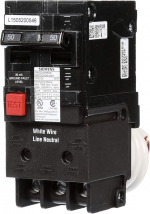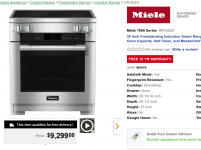marmathsen
Senior Member
- Location
- Seattle, Washington ...ish
- Occupation
- Electrical Contractor
I assume this has been discussed already in this forum but I wasn't able to find a recent thread.
NEC 2023 210.8(A)(6) requires all 125-250V single phase receptacles in a kitchen to be GFCI protected. We recently rewired a kitchen including a 50A GFCI circuit to a Miele induction range. They installed the range today and it's tripping the circuit breaker. I called Miele support and was informed that the range isn't compatible with a GFCI breaker. I also talked with an appliance installer and they told me that they have the same issue with ALL the ranges they install. Their "solution" is that the GFCI breaker gets removed after the final inspection.
Are you all finding the same incompatibility with ALL ranges? There surely must be some ranges that are compatible right? How is everyone else dealing with this problem?
We ran into this issue several years ago on a boat house (555.53) and as far as I know someone swapped it out to a standard breaker because they couldn't use their range otherwise.
Rob - Seattle
NEC 2023 210.8(A)(6) requires all 125-250V single phase receptacles in a kitchen to be GFCI protected. We recently rewired a kitchen including a 50A GFCI circuit to a Miele induction range. They installed the range today and it's tripping the circuit breaker. I called Miele support and was informed that the range isn't compatible with a GFCI breaker. I also talked with an appliance installer and they told me that they have the same issue with ALL the ranges they install. Their "solution" is that the GFCI breaker gets removed after the final inspection.
Are you all finding the same incompatibility with ALL ranges? There surely must be some ranges that are compatible right? How is everyone else dealing with this problem?
We ran into this issue several years ago on a boat house (555.53) and as far as I know someone swapped it out to a standard breaker because they couldn't use their range otherwise.
Rob - Seattle



